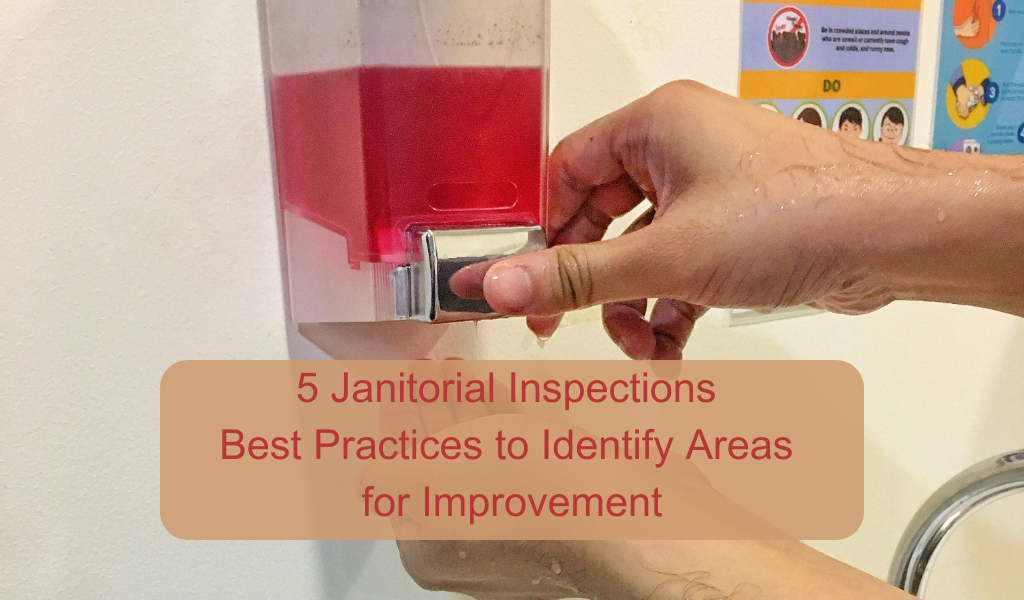These janitorial inspections best practices will improve the quality of your work and make your customers happier than ever.
How are your janitorial inspections? Are you hoping for “good enough?” Does your team see inspections as a box to check off? Worse, do your customers have complaints that your team never seems to notice during inspections? It might be time to update your janitorial inspections best practices.
No matter what we do, there’s always room to improve. That’s why Olympic athletes train every day. That’s why the best chefs are constantly working to improve their recipes.
Inspections may feel different. It’s easy to view them as a device to catch mistakes or point out flaws. But the flipside is that inspections are a great way to learn where you have gaps in your service. Inspections give you useful insight into everything from your hiring and onboarding process to your ongoing training to the tools and products you use.
The key is to take advantage of those inspections. Know what to look for and what to do with that information.
Bidding, asset tracking, cleaning checklists, supply inventory, timekeeping… it’s all here. Janitorial Manager can help you organize all your commercial cleaning operations. Schedule a free call with Janitorial Manager to learn more.
5 Janitorial inspections best practices to take advantage of today
1. Make expectations clear. If your team doesn’t know what to expect, then there’s little chance their work will meet inspection expectations. Make it clear from the start what the parameters are. What, exactly, are the tasks and duties they need to complete? At what point is a job well done? You can include these factors on any checklist, but it’s also helpful to relay these expectations in person. On your first walk-through with your team, point out any unusual conditions. Ensure they know what the job entails and what you and your customer have agreed to.
2. Approach with curiosity. You and your team will enjoy greater benefits if you approach janitorial inspections with a sense of curiosity. You’re not out to get anyone, so make sure your team knows that. There are any number of reasons a task might not be up to par. Ask about extenuating circumstances. Find out if there’s a reason something wasn’t done to the highest standard. Maybe there was an urgent customer request or someone was out sick. Of course, it’s also possible the job needs to be done better. Just don’t make that your assumption.
3. Use a standardized approach. If you change your methods for different locations or even within the same location, your results won’t be as helpful. For example, if you use an ATP meter in one location but a visual inspection in another, you can’t really compare the two. That said, you could compare two different visual inspections or different ATP results. The point is that you want something consistent to measure changes.
4. Use technology. Janitorial software like Janitorial Manager lets you track inspections over time, so you can see if things are improving. Even better, you can upload images, keep a comments history, and sort by location. Software like this makes it easy to see if there’s a particular trouble spot (carpet cleaning, for instance) or if one person is having difficulty. You can use this information to pinpoint additional training, plan more deliberate inspections, or determine the best remedy.
5. Make it easy. The difficulty with inspections is that it’s hard to get consistency when different people conduct them. Instead of risking the possibility of one inspector going in-depth while another is more lenient, make the process straightforward and simple. For example, ensure your quarterly inspections are more thorough than weekly or daily inspections and vice versa. Furthermore, make the grading simple enough that anyone could understand it. You might use a rating system that ranks a completed task as below standard, at standard, and above standard. Then define what those are.
What to do with your results
Janitorial inspections best practices will only help you so much if you can’t do something with the results. So what’s the next step?
First, look at your results and see if anything stands out, positive or negative. Congratulate your team on any positive results. If they’re doing somehting different or unexpected to get these results, find out if you can implement that approach across your company.
Negative results require some additional digging.
Find out if the negative inspection results are consistent across facilities or your team. If this is the case, consider clarifying expectations, adding additional training, or updating your equipment. If the negative results are limited to one location, find out if there is something preventing your team from getting the job done right.
Again, that curiousity is key. You can’t fix something if you don’t first diagnose the issue.
Reviewing your janitorial inspections best practices is an excellent opportunity to update your training and protocols. Take advantage of the information this review offers, and you can improve your janitorial processes.
Improve communications and stay on top of inspections. Schedule a free call with Janitorial Manager to learn how mobile-friendly janitorial software can help your team improve.


